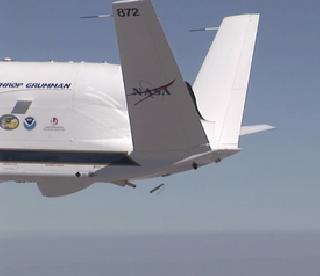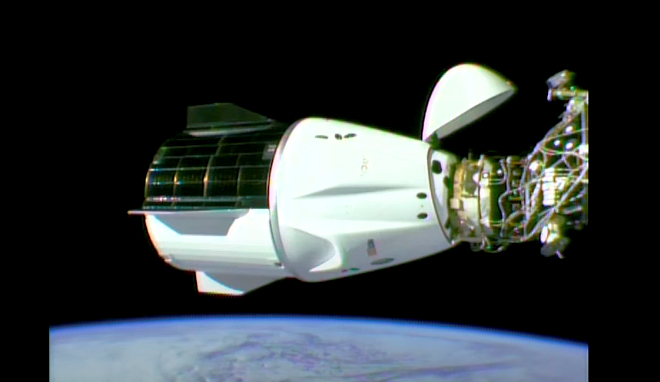
NASA Global Hawk releasing a dropsonde. Photo by NOAA/NASA
SAN DIEGO (BNS): Northrop Grumman produced Global Hawk high altitude unmanned aircraft has begun a series of flights over the Pacific Ocean as part of a campaign to study atmospheric rivers.
Known as Winter Storms and Pacific Atmospheric Rivers (WISPAR), the research is being done by the National Oceanic and Atmospheric Administration (NOAA) to improve winter storm forecasts.
The NASA Global Hawk's WISPAR mission which began on 11th February was a 24-hour flight to study an atmospheric river developing over the Pacific Ocean, between Hawaii and Northern California.
Aboard the Global Hawk for the WISPAR missions are atmospheric reconnaissance devices called dropsondes, developed by NOAA.
They measure temperature, pressure, moisture, wind and other atmospheric phenomena as they drop. Up to 89 dropsondes are released from the aft end of the Global Hawk. The measurements will document conditions along the complete extent of an atmospheric river and its evolution as it approaches landfall.
Another sensor aboard the Global Hawk is the High Altitude Microwave Monolithic Integrated Circuit (MMIC) Sounding Radiometer (HAMSR), an atmospheric sounder based on MMIC technology designed and built at NASA's Jet Propulsion Laboratory.
HAMSR is a passive microwave radiometer, which measures the thermal radiation emitted from the atmosphere and the surface below the aircraft.
NASA Global Hawk relays data from both sensors through satellites to scientists at the Global Hawk Operations Center at DFRC. The scientists are able to direct changes to Global Hawk's flight path to focus collection on the atmospheric rivers, based on the dropsonde and HAMSR readings.
Northrop Grumman contributes to the WISPAR campaign by providing maintenance and flight operations support as part our partnership with NASA.
 Previous Article
Previous Article Next Article
Next Article









The Indian Air Force, in its flight trials evaluation report submitted before the Defence Ministry l..
view articleAn insight into the Medium Multi-Role Combat Aircraft competition...
view articleSky enthusiasts can now spot the International Space Station (ISS) commanded by Indian-American astr..
view article